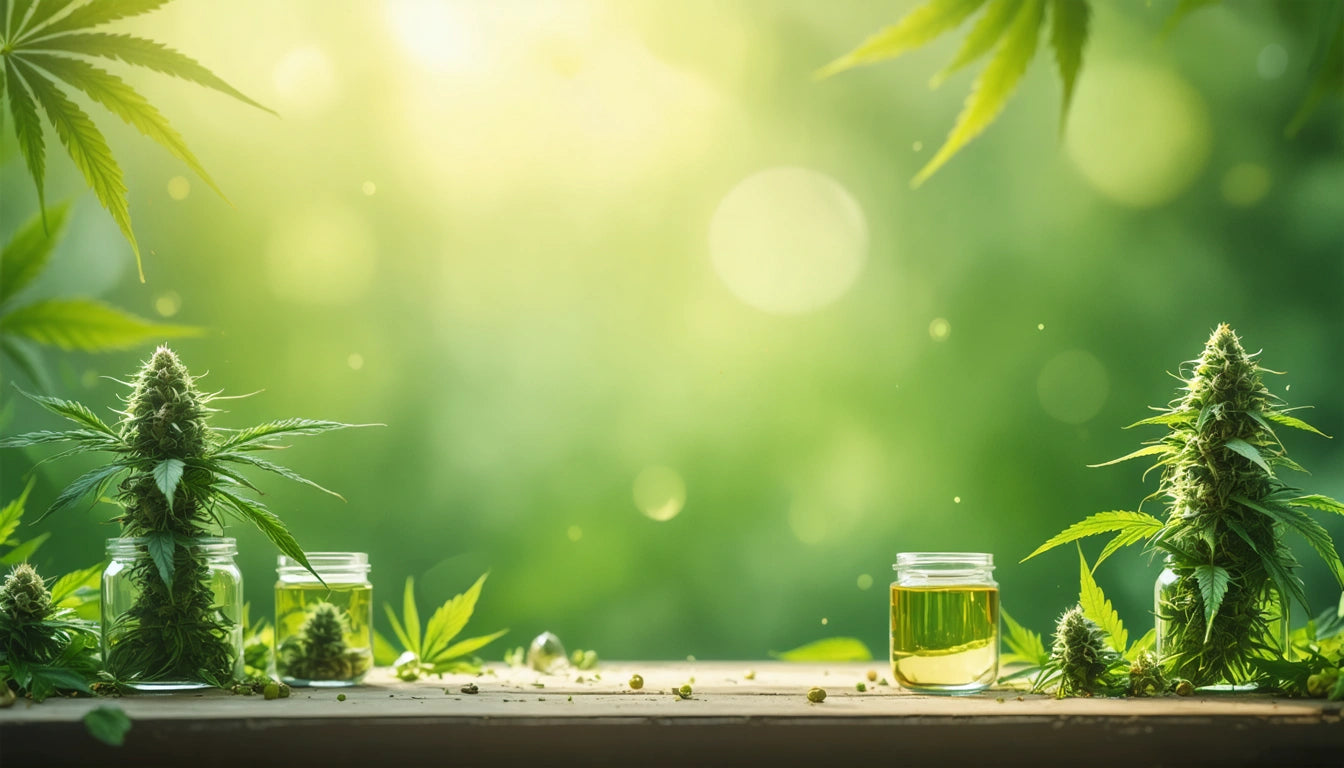Table of Contents
- Understanding Terpenes: Nature's Aromatic Compounds
- Common Cannabis Terpenes and Their Effects
- The Entourage Effect: How Terpenes Work With Cannabinoids
- Terpene Preservation: Storage and Handling
- Terpene Testing and Product Selection
- The Future of Terpene Research and Customized Cannabis Experiences
When you open a jar of quality cannabis, that distinctive aroma that hits your nose isn't just a pleasant bonus. It's actually a complex symphony of compounds called terpenes, which play a crucial role in the cannabis experience. Understanding terpenes can help consumers make more informed choices about the products they use and the effects they might experience.
Understanding Terpenes: Nature's Aromatic Compounds
Terpenes are aromatic organic compounds found in many plants and even some insects. In cannabis, they're produced in the same glandular trichomes that create cannabinoids like THC and CBD. While over 150 terpenes have been identified in cannabis, only a handful appear in significant concentrations.
These compounds evolved primarily as a defense mechanism, helping plants repel predators and attract pollinators. In cannabis cultivation, terpene profiles can be affected by numerous factors including growing conditions, climate, soil type, fertilizers, and even the time of harvest.
Beyond Aroma: Terpene Functions
While terpenes are responsible for the distinctive smell of different cannabis strains, their role extends far beyond aroma:
- They contribute to the flavor profile of cannabis products
- They interact with cannabinoids to create strain-specific effects
- They may have their own therapeutic properties
- They help distinguish between indica, sativa, and hybrid experiences
Common Cannabis Terpenes and Their Effects
Each terpene offers unique properties and potential effects. Here are some of the most common terpenes found in cannabis:
Myrcene
Often the most abundant terpene in cannabis, myrcene has an earthy, musky aroma similar to cloves. It's believed to have sedative, relaxing effects and is commonly found in indica-dominant strains. Myrcene may also increase the permeability of cell membranes, potentially allowing cannabinoids to take effect more quickly.
Limonene
With a citrusy scent reminiscent of lemons, limonene is associated with elevated mood and stress relief. It's commonly found in sativa-dominant strains and may have anti-anxiety and antidepressant properties.
Pinene
As the name suggests, pinene smells like pine trees and is the most common terpene in the natural world. It's associated with improved alertness and memory retention and may counteract some of THC's potential memory-impairing effects.
Linalool
With a floral, lavender-like aroma, linalool is known for its calming, relaxing effects. It's being studied for potential anti-anxiety, anti-convulsant, and anti-depressant properties.
Caryophyllene
Unique among terpenes, beta-caryophyllene can interact with the body's endocannabinoid system directly. It has a spicy, peppery profile and may offer anti-inflammatory and pain-relieving effects.
The Entourage Effect: How Terpenes Work With Cannabinoids
The entourage effect refers to the synergistic interaction between cannabis compounds, including terpenes and cannabinoids like THC and CBD. This theory suggests that the full spectrum of cannabis compounds working together produces effects that isolated compounds cannot.
For example, certain terpenes might enhance the therapeutic effects of cannabinoids while mitigating unwanted side effects. Myrcene may increase the sedative properties of THC, while limonene might counteract anxiety that some users experience with high-THC products.
This is why many consumers find that whole-plant cannabis products provide different and often more beneficial effects than isolated cannabinoid products. The specific combination of terpenes and cannabinoids creates the unique "fingerprint" of each cannabis strain.
Terpene Preservation: Storage and Handling
Terpenes are volatile compounds that can degrade with improper storage. To preserve these valuable compounds:
- Store cannabis in airtight containers away from light
- Maintain proper humidity levels (58-62% is ideal)
- Keep at cool temperatures
- Avoid excessive handling which can break trichomes
Proper storage techniques are essential for maintaining potency and terpene profiles. Many producers are now using specialized equipment for filling and packaging products to preserve delicate terpene profiles during the manufacturing process, ensuring consumers get the full intended experience.
Terpene Testing and Product Selection
As consumers become more terpene-aware, many cannabis products now include terpene profiles on their labels or lab reports. When selecting products:
- Look for detailed terpene information on packaging
- Consider certificates of analysis that include terpene testing
- Learn which terpene profiles align with your desired effects
- Read cannabis labels carefully for terpene content
Understanding terpene profiles can help you select products more likely to provide your desired experience, whether that's relaxation, energy, creativity, or pain relief. This is especially important when determining appropriate dosages for beginners, as terpenes can influence sensitivity to cannabinoids.
The Future of Terpene Research and Customized Cannabis Experiences
The cannabis industry is increasingly focusing on terpene profiles to create products tailored to specific effects and experiences. As research advances, we're likely to see:
- More precise breeding for specific terpene profiles
- Terpene-focused product recommendations
- Expanded medical applications based on terpene-cannabinoid combinations
- Personalized cannabis formulations based on individual needs
Understanding terpenes adds a new dimension to cannabis consumption, moving beyond the simplistic indica/sativa categorization toward a more nuanced approach based on chemical composition. This knowledge empowers consumers to make more informed choices about the products they use and the experiences they seek.
Whether you're using cannabis for recreation, wellness, or medical purposes, understanding terpenes can help you navigate the increasingly complex world of cannabis products with greater confidence and precision.











Leave a comment
All comments are moderated before being published.
This site is protected by hCaptcha and the hCaptcha Privacy Policy and Terms of Service apply.